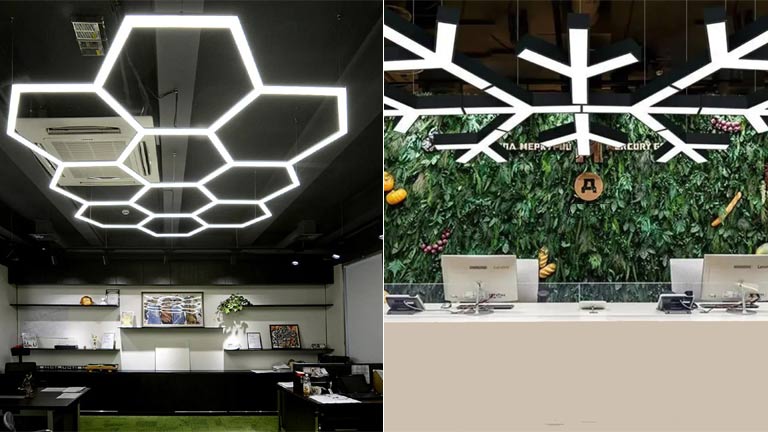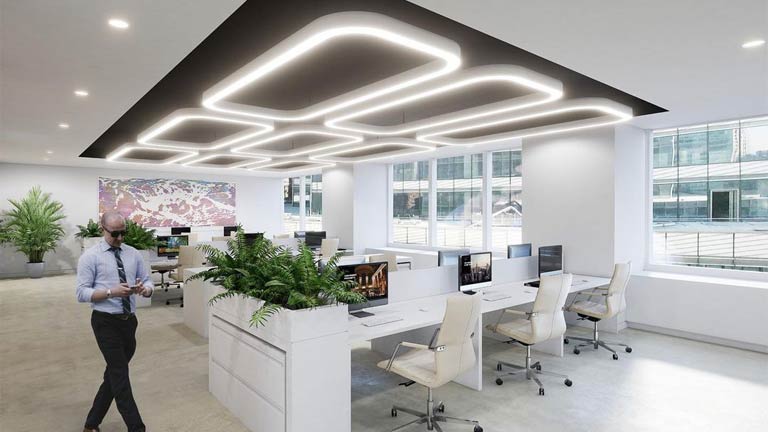
In the ever-evolving landscape of technological advancements and sustainability concerns, the world of commercial lighting has not been left untouched. Australia, a country known for its commitment to eco-consciousness and cutting-edge technologies, has been at the forefront of adopting and promoting the latest developments in commercial lighting. From energy-efficient LEDs to smart lighting systems, the nation is illuminating its commercial spaces in more ways than one. In this article, we delve into the latest developments in commercial lighting in Australia, exploring the trends, statistics, and their impact on energy consumption, business operations, and the environment.
Are LEDs Revolutionizing Commercial Lighting?
Light Emitting Diodes (LEDs) have been nothing short of a revolution in the lighting industry. These energy-efficient sources have made significant headway into commercial spaces across Australia. In comparison to traditional incandescent bulbs, LEDs consume substantially less energy, last longer, and emit lower levels of heat, contributing to lower maintenance costs and enhanced safety. The adoption of LEDs in Australia’s commercial sector is evident in the statistics: By 2021, approximately 80% of the commercial lighting market had transitioned to LED lighting systems, resulting in an impressive 80% reduction in energy consumption for lighting purposes compared to older technologies.
The Rise of Smart Lighting Systems: A Bright Idea?
In tandem with the global surge in the Internet of Things (IoT), smart lighting systems have emerged as a bright idea in commercial spaces. These systems, equipped with sensors and connectivity, enable lighting to be responsive to human presence, ambient light levels, and even time of day. Australia’s adoption of smart lighting solutions is gradually gaining momentum, with an anticipated growth rate of 19.3% from 2022 to 2027. These systems not only offer the benefit of enhanced energy efficiency but also facilitate personalized lighting experiences, which can contribute to improved employee well-being and productivity.
Human-Centric Lighting: Lighting for Health and Productivity
Australia’s approach to commercial lighting is transforming, recognizing the profound impact of light on human health and productivity. Human-centric lighting takes into account the circadian rhythm and biological responses to light, tailoring illumination throughout the day to mimic natural lighting conditions. Studies have shown that human-centric lighting can positively influence sleep quality, mood, and even cognitive performance. With businesses increasingly valuing employee well-being and performance, the integration of human-centric lighting into commercial spaces is becoming a priority.
Energy Efficiency and Sustainability: A National Goal
Australia’s commitment to energy efficiency and sustainability is driving the adoption of greener lighting solutions. The country’s target to reduce greenhouse gas emissions by 26-28% by 2030 has placed a spotlight on the importance of energy-efficient lighting. LED technology, with its minimal energy consumption and longer lifespan, aligns seamlessly with these goals. Furthermore, the government’s incentives for businesses to transition to energy-efficient lighting have contributed to the widespread adoption of LEDs in commercial spaces.
Lighting as a Service (LaaS): A Paradigm Shift
The concept of Lighting as a Service (LaaS) is disrupting the way businesses approach their lighting needs. LaaS involves outsourcing the entire lighting infrastructure, including design, installation, maintenance, and even updates, to a third-party provider. This model allows businesses to focus on their core operations while benefiting from the latest lighting technologies and reduced energy costs. LaaS is gaining traction in Australia, particularly in sectors where lighting demands are high, such as retail and healthcare.
Challenges on the Horizon: Balancing Technology and Responsibility
While Australia embraces the advancements in commercial lighting, certain challenges emerge that warrant attention. One such challenge is electronic waste (e-waste) generated by the disposal of older lighting technologies. Responsible e-waste management is crucial to prevent environmental harm and optimize resource recovery. Additionally, as smart lighting systems become more prevalent, concerns regarding data privacy and cybersecurity come to the forefront. Striking a balance between technological innovation and ethical responsibility is a tightrope that both businesses and regulatory bodies must navigate.
The Road Ahead: A Brilliant Future
As Australia propels forward into the realm of cutting-edge commercial lighting, the road ahead looks brilliantly illuminated. The convergence of energy efficiency, sustainability, and technological innovation has paved the way for a future where lighting systems are not only functional but also enhance well-being, productivity, and environmental stewardship. The symbiotic relationship between business and the environment is increasingly evident, with commercial lighting acting as a microcosm of this synergy.
Local Innovations: A Showcase of Australian Ingenuity
Australia’s journey toward illuminating its commercial spaces with innovation doesn’t stop at global trends. The nation has birthed its unique solutions that highlight its penchant for ingenuity and adaptability. One such innovation is the integration of solar-powered lighting systems. Given Australia’s abundant sunlight, harnessing solar energy for lighting is a natural step toward sustainability. Solar-powered streetlights and outdoor lighting solutions have gained traction, especially in remote areas where traditional power sources are less accessible.
Beyond Efficiency: Lighting’s Role in Urban Aesthetics
While energy efficiency and functionality are paramount in commercial lighting, aesthetics should not be overlooked. Well-designed lighting not only enhances the visual appeal of urban landscapes but also contributes to creating vibrant and inviting public spaces. From architectural lighting that accentuates the unique features of buildings to ambient lighting that sets the mood for outdoor areas, Australia’s commercial spaces are experiencing a transformation that blends artistry and functionality.
An Ecosystem of Collaboration: Industry and Academia Unite
The evolution of commercial lighting in Australia is not a solo endeavor; it is a product of collaboration between industry pioneers and academic research. Universities and research institutions across the country are delving into areas such as advanced materials for lighting, smart lighting controls, and the psychology of lighting. This ecosystem of collaboration ensures that the latest technological developments are informed by scientific research and real-world applications, leading to solutions that are both innovative and evidence-based.
A Call to Action: Empowering Businesses and Individuals
As Australia navigates the realm of commercial lighting, a call to action resonates for businesses and individuals alike. Businesses are encouraged to embrace sustainability and efficiency as guiding principles in lighting decisions. Transitioning to LED lighting, adopting smart lighting systems, and considering human-centric lighting are steps that not only contribute to the bottom line but also align with environmental stewardship.
On an individual level, awareness and education play pivotal roles. Consumers can make informed choices by understanding the benefits of energy-efficient lighting, demanding responsible e-waste disposal, and participating in energy-saving initiatives. Empowering individuals to recognize their role in the larger sustainability narrative reinforces the collective impact of these efforts.
Fostering Resilience: Lighting in the Face of Challenges
While Australia’s advancements in commercial lighting are undoubtedly commendable, it’s essential to address the challenges that this sector may face in the years to come. Climate change, for instance, can impact the predictability of natural lighting patterns. Extreme weather events and shifts in daylight hours could necessitate adaptable lighting systems that align with changing conditions. This poses both a challenge and an opportunity for the lighting industry to innovate further, developing systems that can seamlessly integrate with dynamic environmental factors.
Data-Driven Insights: Optimizing Commercial Spaces
In the era of digital transformation, the data generated by smart lighting systems presents a wealth of possibilities. Businesses can harness these insights to optimize the utilization of their commercial spaces. By analyzing occupancy patterns, peak usage times, and energy consumption data, organizations can make informed decisions about lighting schedules and layouts. This not only contributes to energy efficiency but also streamlines operations and enhances customer experiences.
A Circular Economy Approach: Lighting the Way
Sustainability in commercial lighting extends beyond the initial transition to energy-efficient technologies. The concept of a circular economy, which prioritizes resource efficiency and waste reduction, is gaining traction. Instead of discarding outdated lighting systems, businesses are exploring refurbishment, reconditioning, and component recycling. This approach not only reduces e-waste but also maximizes the lifespan of lighting infrastructure, aligning with Australia’s sustainability goals.
Policy and Regulation: Navigating the Terrain
The landscape of commercial lighting is inevitably influenced by policy and regulation. As technology evolves, regulatory frameworks must adapt to ensure the safe and responsible deployment of innovative lighting solutions. Government support, incentives, and mandates play a critical role in accelerating the adoption of energy-efficient lighting. Australia’s government has already demonstrated its commitment through initiatives like the Commercial Building Disclosure program, which mandates energy efficiency reporting for certain commercial office spaces.
An Equitable Approach: Lighting for All
As Australia pushes the boundaries of commercial lighting innovation, it’s essential to consider equity in access. While major cities may experience rapid transformations, ensuring that remote and underserved areas also benefit from these advancements is vital. Solar-powered lighting solutions, for instance, can bring illumination to areas that lack reliable power sources, contributing to safety and community development. This approach aligns with Australia’s commitment to fostering inclusivity and bridging urban-rural disparities.
Envisioning Tomorrow: A Synergy of Possibilities
Australia’s journey into the future of commercial lighting is a convergence of technology, sustainability, and human well-being. The synergy of these elements paints a picture of a future where commercial spaces are intelligently illuminated, responsive to human needs, and respectful of the environment. It’s a future where lighting isn’t just a functional necessity but an integral part of creating holistic, harmonious spaces.
The pathway forward involves continued collaboration between industry leaders, academia, policymakers, and the community. As Australia navigates the complexities of technological evolution, societal shifts, and environmental concerns, the guiding light remains steady: a commitment to progress that’s both intelligent and ethical.
A Luminous Path Forward
In the land Down Under, where innovation meets eco-consciousness, the latest developments in commercial lighting have cast a luminous path forward. From LEDs to smart lighting systems, from energy efficiency to human-centric designs, Australia is shaping its commercial spaces with a blend of technology, sustainability, and creativity. As the nation forges ahead, it carries the torch of responsible progress, illuminating not only its physical spaces but also its commitment to a brighter, greener future.
The strides taken in Australia’s commercial lighting sector resonate beyond its borders, serving as a beacon of inspiration for the global community. The lessons learned and the successes achieved underscore the transformative potential of technology when harnessed in harmony with the environment. As we peer into the future, we are reminded that every flicker of innovation contributes to the collective radiance of progress, leading us toward a future that is brilliantly illuminated in both literal and metaphorical senses.




